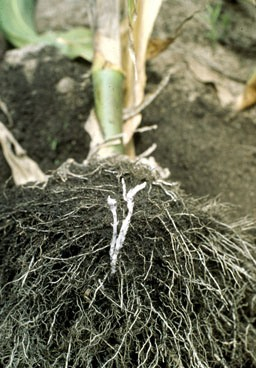- Series:Plants, Transcript English
Matthew 11:28
“Come unto me, all [ye] that labour and are heavy laden, and I will give you rest.”
 The strange and nasty plant called witchweed is found mainly in Africa and Asia, but some has been reported in North America as well. This parasitic plant can prevent crop plants from producing yields and is said to be responsible for intensifying the results of famine in Ethiopia.
The strange and nasty plant called witchweed is found mainly in Africa and Asia, but some has been reported in North America as well. This parasitic plant can prevent crop plants from producing yields and is said to be responsible for intensifying the results of famine in Ethiopia.
Not long after germination, witchweed sends an enzyme “feeler” through the soil around it to find nearby roots. If the enzyme finds a root system, it will digest a few of the cells on the root surface. The damaged roots actually help the witchweed by sending out a chemical response that confirms their presence to the witchweed. The witchweed then grows an attachment organ to penetrate the neighbor’s root system. However, witchweed cannot penetrate many root systems. If attachment is not made within four days, the witchweed grows aimlessly and dies in less than a week.
If the witchweed successfully attaches to a neighbor’s root system, witchweed can enjoy a long and full life, being fed by its neighbor’s roots. In fact, witchweed changes the hormones produced by its neighbor so that the neighbor’s root system grows ever larger at the expense of the stem growth of the victim. While the victim may live its normal span, it will not be allowed enough strength to reproduce.
Witchweed is no simple plant. We learn from the witchweed that the Creator’s unlimited imagination not only created some very strange living things, but also created some unique solutions to providing a means of living for them.
Prayer: Dear Father in heaven, I face problems in my life. I commend all of my cares and concerns into Your powerful, inventive and loving care. In Jesus’ Name. Amen.
Author: Paul A. Bartz
Ref: “The underground sorcery of witchweed.” Discover, Dec. 1985. p. 14. Photo: Witchweed by USDA APHIS PPQ Archive CCA by 3.0
© 2021 Creation Moments. All rights reserved.
Click here for today’s featured book: Hand of God
